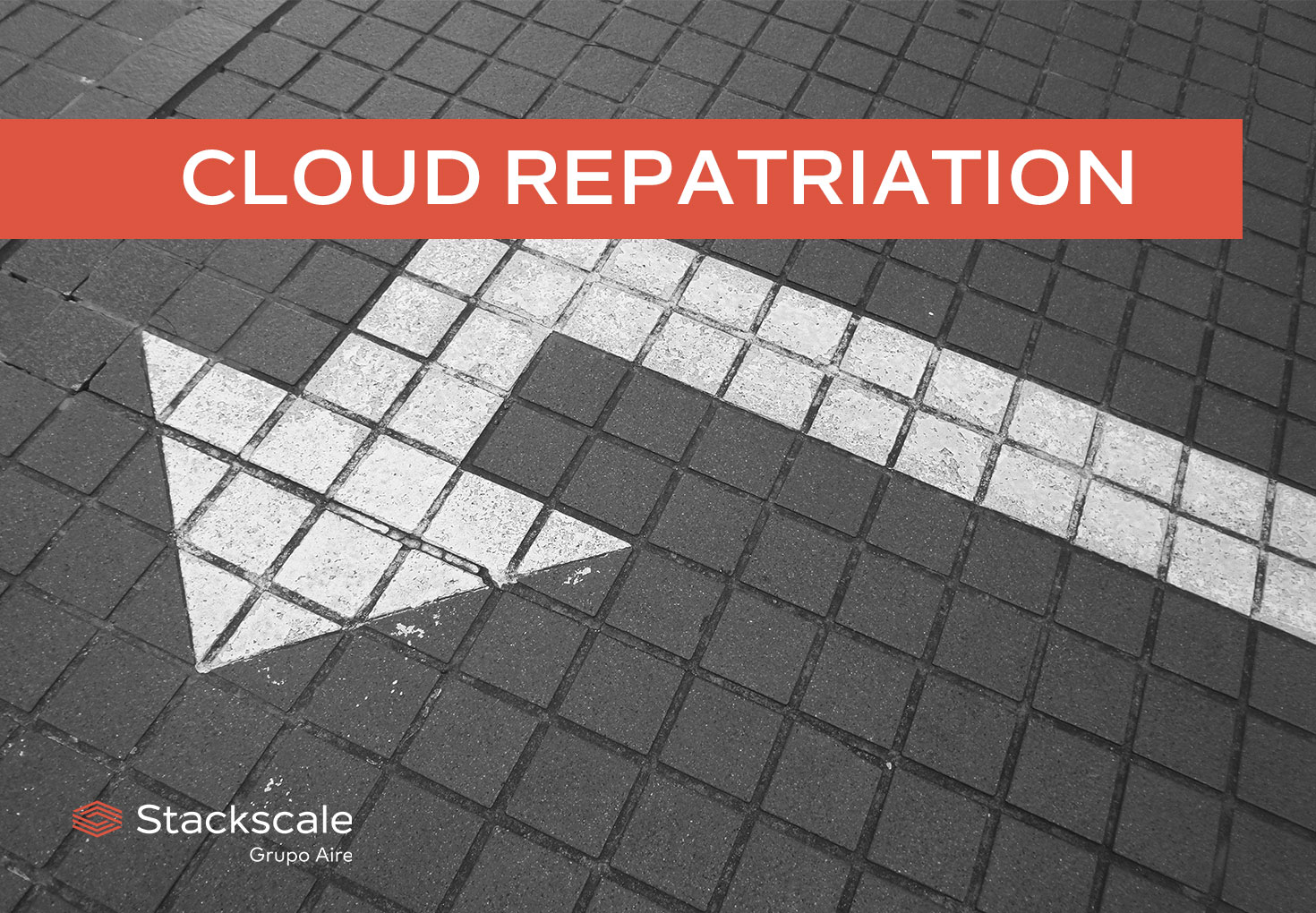Cloud repatriation is gaining popularity among CIOs and CTOs to achieve higher performance, control and cost efficiency as projects evolve and scale. It is a valuable tool to relocate workloads when the balance between costs and benefits is not as expected. Repatriation generally involves migrating to a dedicated solution that works best for running the business workloads.
What is cloud repatriation?
Cloud repatriation, also known as “uncloud”, consists of moving workloads and applications from hyperscale public clouds to other IT solutions — dedicated servers, hosted private cloud environments, colocation facilities, managed service providers or a local public cloud provider. Therefore, it does not necessarily involve taking workloads back to the company’s in-house infrastructure, but relocating them to a more suitable one. Furthermore, it may not entail the relocation of all systems and workloads.
Why are companies repatriating workloads?
Taking some workloads away from hyperscale public clouds does not necessarily imply dissatisfaction, but the need to relocate certain workloads to a more efficient environment.
While hyperscale public cloud’s costs are low in the early stages, they can grow uncontrollably as companies scale and grow. So, tracking cloud spend is not only vital, but it also serves as a performance metric.
Some of the reasons behind cloud repatriation are:
- Controlling cost overruns.
- Optimizing performance.
- Increasing overall visibility and control.
- Addressing data governance and security issues.
- Compatibility problems.
Planning for cloud repatriation
Planning is indispensable for cloud repatriation, as for any other business-critical decision. Organizations need to answer to questions such as:
- Which environment they are moving their workloads to.
- Which workloads are to be relocated.
- How to manage and reduce complexity in case of opting for a hybrid or multicloud approach.
Moreover, it is recommended to consider the potential for repatriation early on. It is important to invest in an architecture that makes it easy to migrate workloads between IT solutions; not only to avoid vendor lock-in, but to leverage the most suitable environment at each stage of the business lifecycle.
Cloud repatriation strategy
A cloud repatriation strategy requires proper planification to maximize effectiveness and minimize risks. It includes:
- The assessment of particular business specifications and requirements.
- The creation of a migration plan.
- The design and deployment of an infrastructure that adapts to the real needs of the organization and thus contributes to optimize the IT budget.
- The testing and validation of the new environment.
Repatriating workloads from hyperscalers
Hyperscale public cloud solutions are often chosen at early stages as a way to accelerate innovation with increased agility. However, private cloud and other dedicated solutions come into play when businesses wish to increase performance, cost predictability and control.
These are some of the benefits companies can leverage when repatriating workloads from hyperscalers to dedicated infrastructure and cloud solutions.
Predictable performance
Most business workloads are predictable, and so should be performance. That is why, as businesses mature, CTOs look into dedicated and specialized infrastructure solutions to achieve predictable high performance and optimize the cost of revenue.
A dedicated infrastructure allows organizations to optimize cloud spend by avoiding overprovisioning and increasing cost visibility. Besides, in combination with a completely redundant, low-latency network storage, they can achieve constant high performance, without noisy neighbors, and better data availability.
Organizations should know the performance they can expect from their IT environment at any time.
Together with transparent pricing, companies should have full access to the technical details of the infrastructure they are relying on. This helps both optimizing performance and minimizing risks.
Control over costs
Cost escalation is one of the main reasons why companies repatriate workloads and applications to dedicated servers and private cloud environments. Even though hyperscale public cloud services offer relatively low upfront costs, expenses tend to rocket over time.
Although the cost-benefits ratio depends on each project’s specifications, operational costs in hyperscale cloud services tend to scale along with storage and cloud usage. This results in higher than expected expenses in many cases, often making companies lose control over their IT budget.
So, in addition to looking for cloud cost management tools to optimize the cloud budget, companies are also looking towards repatriation to better distribute their workloads and IT systems. In this regard, from our experience, private cloud environments offer a better cost-performance ratio in most cases, as the majority of business workloads are predictable.
There are many alternatives to hyperscale public cloud services that allow migrating from on-premise to cloud, leveraging the benefits of an OPEX model. For example, private cloud environments and bare-metal servers offer higher cost-efficiency and predictability over time, increasing control both over costs and performance.
Regulatory compliance and security
Data protection and governance has become a priority in the digital economy, and local infrastructure solutions are gaining relevance in this regard. Organizations are increasingly focusing on adopting strict privacy and security measures, not only for regulatory compliance, but also for business continuity reasons.
Another concern behind hyperscale public cloud repatriation is data location. Businesses must comply with security and privacy regulations, and best practices within the location they operate in. That is why, for instance, opting for cloud providers that host their services in European data centers makes it easier for companies to comply with the EU’s regulatory framework. In addition to reducing latency.
Implementing a hybrid or multicloud approach
When repatriating workloads, many organizations opt for a hybrid or multicloud approach. In such cases, it is important to reduce complexity to leverage the benefits and avoid issues. A multicloud approach offers an additional level of agility, especially for big and complex projects, but it demands a greater amount of management.
If properly managed, a hybrid approach increases resilience in case of a major outage, as companies rely on diverse cloud providers. Moreover, together with a strong Disaster Recovery and backups strategy, it also improves reliability and data availability, limiting the impact of a downtime due to a failure or any other incident.
To sum up, cloud repatriation and mobility between environments will probably become a standard practice to optimize performance and costs over time. As projects evolve and IT teams become familiar with the cloud lifecycle, it is easier for them to determine which is the best deployment model for each workload, at each stage.





